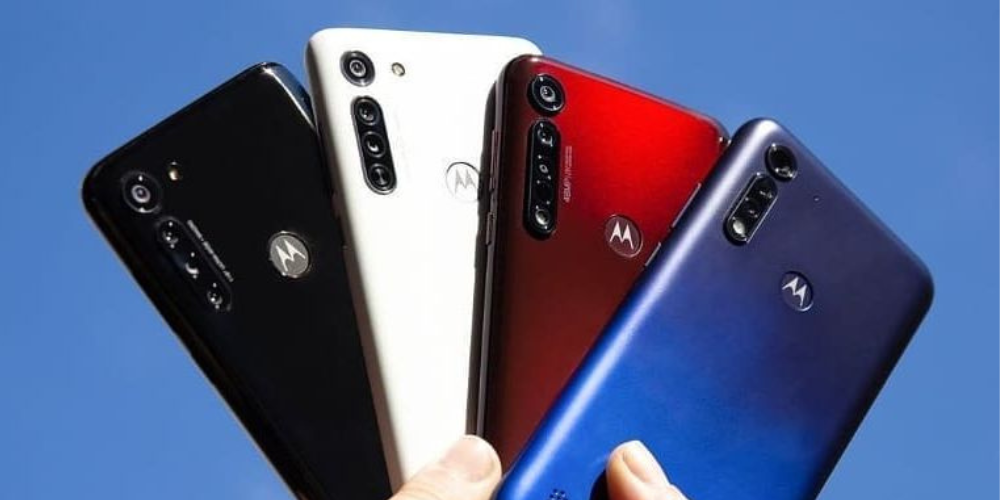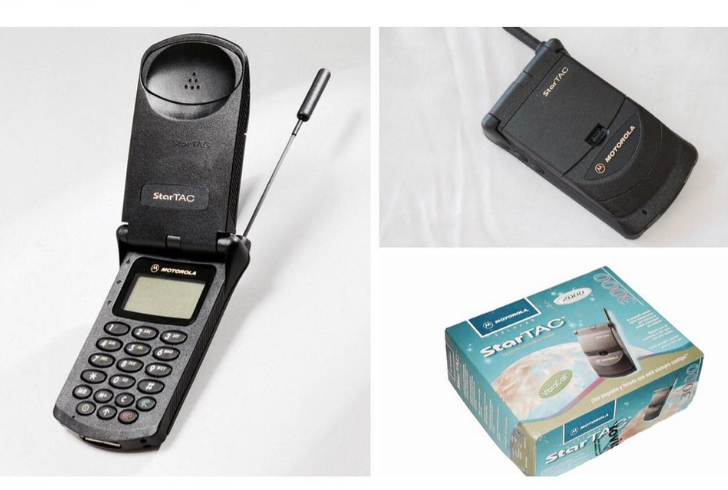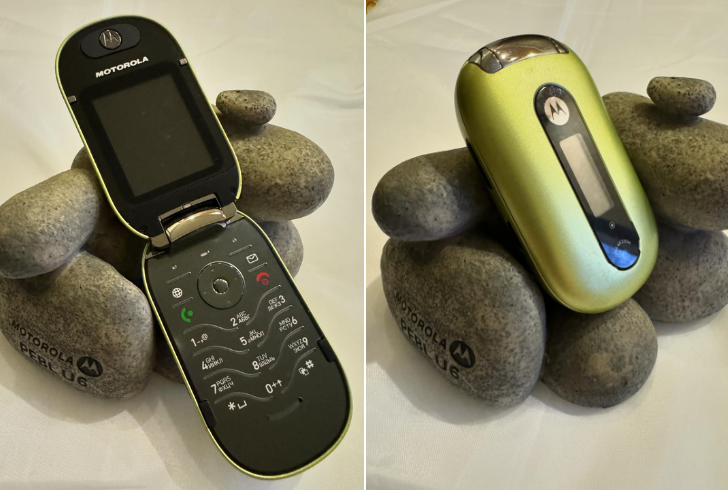
Exploring the Legacy of Old Motorola Phones

Remember those days when “hello” wasn’t just a greeting, but a way of life? We’re talking about the pre-smartphone era, when the pinnacle of mobile communication resided in the pocket-filling giants known as old Motorola phones. These weren’t just communication tools; they were status symbols, conversation starters, and for some, even a prized fashion accessory.
Let’s take a trip down memory lane and revisit some of the iconic Motorola phones that paved the way for the sleek devices we hold in our hands today.
The Originals: Paving the Way for Mobile Freedom
DynaTAC 8000X (1984)
Imagine a phone the size of a housebrick, weighing almost a kilogram, and costing a staggering $4000 (which translates to a whopping $9265 today!). Meet the DynaTAC 8000X, the original Motorola phone that kickstarted the mobile revolution. Sure, its 30-minute talk time and 10-hour charge time seem laughable by today’s standards, but it was a groundbreaking feat of engineering, freeing communication from the confines of a desk or car.
MicroTAC (1989)
Mercifully, the MicroTAC arrived five years later, offering a significant reduction in size and weight compared to its brick-like predecessor. This classic Motorola phone was a marvel for its time, being the smallest and lightest mobile phone in the world. It even sported a red, 8-character dot matrix display and a built-in phonebook, making it a feature-packed marvel for the late 80s.
The Innovators: Designs that Dazzled
StarTAC (1996)

Instagram | roquethedad | The StarTAC, with its Star Trek-inspired clamshell design, was a pocket fashion statement.
Motorola truly hit its stride with the StarTAC. This phone, with its clamshell design inspired by the Star Trek communicators, was like a fashion statement for your pocket. At a more affordable (by comparison) $1000, the StarTAC was incredibly thin and light, featuring a vibrating alert (a first for its time) and the ability to send SMS messages in later models. With over 60 million units sold, the StarTAC was the old Motorola phone that everyone aspired to own.
V70 (2002)
Remember spinning fidget toys? The V70 took that concept and applied it to a phone. This quirky handset boasted a circular display that swivelled open to reveal the keypad. It may not have been the most practical design, but the V70 was undeniably a conversation starter, inspiring a new wave of old Motorola phones with unconventional aesthetics.
Razr (2004)
The Razr wasn’t just a phone; it was a cultural icon. This ultra-slim clamshell phone, with its two-screen design, was the epitome of cool. While the user interface may not have been the most intuitive, the Razr’s sleek design made it a must-have accessory for the fashion-conscious. Even today, the Razr’s legacy lives on, inspiring the new Motorola Razr (2020) – a foldable phone that pays homage to the original.
Beyond the Bezel: Evolution in Features
Pebl (2005)

Instagram | In 2005, the Pebl, named for its smooth, pebble-like design, delighted users with its satisfying feel in hand.
Named for its smooth, pebble-like form, this phone was a pleasure to hold. The Pebl’s magnetic spring mechanism made opening and closing it satisfyingly clicky, foreshadowing the haptic feedback features of modern smartphones.
Rokr E1 (2005)
Believe it or not, Motorola predated the iPhone when it came to music integration in phones. The Rokr E1, launched two years before the first iPhone, was the first phone to offer iTunes support. While storage limitations and slow transfer speeds hampered its true potential, the Rokr E1 was a visionary attempt to merge music and mobile phones.
Rizr Z8 (2007)
Motorola wasn’t afraid to experiment with form factors. The Rizr Z8, with its kick-slider design, offered a more comfortable talking experience by curving the phone slightly when open. While its camera capabilities wouldn’t impress today, the Rizr Z8’s expandable memory (a generous 32GB at the time) was a feature many smartphones wouldn’t offer for years to come.
ZN5 (2008)
In a world obsessed with megapixel counts, the ZN5 dared to be different. This classic Motorola phone focused on camera experience rather than raw specs. With a compact, camera-like design, a Xenon flash, and Kodak software integration, the ZN5 appealed to budding mobile photographers. The ZN5’s manual lens cover and protruding lens (think of a slimmer version of today’s smartphone camera bumps) added to its professional aesthetic.
Atrix 4G (2011)
The Atrix wasn’t just a phone; it was a glimpse into the future. This innovative device sported the first-ever fingerprint scanner on a smartphone, paving the way for the secure unlocking systems we use today. While the technology wasn’t quite as seamless as modern fingerprint scanners, it was a pioneering step in mobile security.
The Atrix also offered the revolutionary Lapdock accessory, essentially a detachable screen and keyboard that transformed the phone into a makeshift laptop. This concept of phone-laptop convergence was ahead of its time, but foreshadowed similar features found in some modern devices.
Moto G (2013)
A turning point for Motorola, the Moto G was the first phone under Google’s ownership. Targeted at emerging markets, the Moto G offered powerful specs at an affordable price. In an era where budget phones were notoriously sluggish, the Moto G surprised everyone with its smooth performance.
This strategy proved hugely successful, making the Moto G Motorola’s best-selling smartphone ever. The Moto G’s legacy lives on, inspiring the continued development of high-quality, budget-friendly smartphones.
Moto Z (2016)

Instagram | mkbhd’s | In 2016, as wild phone designs waned, Motorola revived excitement with the Moto Z.
By 2016, the era of wacky phone designs had largely faded. However, Motorola brought back a touch of excitement with the Moto Z. This incredibly thin phone sacrificed a headphone jack (a controversial move at the time) but made up for it with a unique modular design.
The Moto Z could be enhanced with magnetically attachable modules, adding features like speakers or even a projector. While not a mainstream success, the Moto Z planted the seeds for the modular phone concept, which some manufacturers are revisiting today.
Razr (2020)
Folding phones may seem like a recent innovation, but Motorola was actually a pioneer in this space. The original Razr, released in 2004, popularized the clamshell design. In 2020, Motorola paid homage to this legacy with the new Razr. This modern iteration folds to reveal a large screen while maintaining the iconic clamshell form factor.
While some aspects like mid-range specs and a premium price tag limited its widespread appeal, the Razr (2020) signaled Motorola’s return to bold and innovative design.
So, there you have it! This trip down memory lane has revisited some of the most iconic old Motorola phones. From the world’s first portable phone to the cutting-edge designs of the Razr and Moto Z, Motorola has left an undeniable mark on the history of mobile communication. These old Motorola phones weren’t just devices; they were cultural touchstones, shaping how we connect and interact with the world around us.
More in Tech
-
`
Cowboy Superstitions and Traditions That Might Surprise You
Picture this: the chute clangs open, dust plumes, and all eyes track a cowboy mid-stride. But what the crowd doesn’t see...
July 22, 2025 -
`
What’s Changing for Student Loans After Trump’s New Spending Bill?
The passing of President Donald Trump’s latest spending bill is shaking up more than just tax brackets and business deductions—it’s poised...
July 16, 2025 -
`
Why Big Tech Is Divided on the Future of Artificial General Intelligence
Fifteen years ago, the founders of DeepMind—Sir Demis Hassabis, Mustafa Suleyman, and Shane Legg—set a bold goal: “Build the world’s first...
July 1, 2025 -
`
Planning a Wedding? These Money-Saving Tips Actually Work
Weddings are meant to be memorable, not financially draining. But for many couples, the cost of tying the knot often brings...
June 24, 2025 -
`
Did MrBeast Really Borrow Money From His Mother for His Wedding?
YouTube star Jimmy Donaldson, widely known as MrBeast, sparked surprise when he shared a personal update on X. Despite leading the...
June 17, 2025 -
`
How Smart Technology Is Changing the Way We Travel
Technology has reshaped nearly every part of modern life, and travel is no exception. From how we plan trips to how...
June 12, 2025 -
`
Why Some Tech CEOs Are Replacing Themselves With AI Avatars
In a move that signals a shift in how corporate communication is handled, major tech CEOs are beginning to hand the...
June 3, 2025 -
`
Is Innovation Dead in American Pop Culture?
Has something changed in the way we engage with American pop culture? Scroll through your favorite streaming service, tune into the...
May 27, 2025 -
`
7 Key Steps to Start a Profitable Digital Products Business
Starting a digital products business offers an exciting opportunity to turn your skills and knowledge into a revenue-generating venture. Whether you’re...
May 20, 2025














You must be logged in to post a comment Login